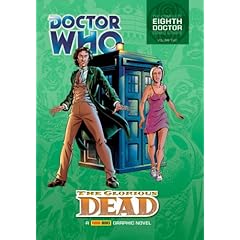
This is the first collected edition of Chris Onstad's Achewood comic, and it's a simply gorgeous book. It looks exactly like it would have been designed fifty years ago, sort of like an old high school yearbook with an elk or a caribou embossed on the front.
I have to say that the overall appeal of Achewood continues to elude me, though I will, very occasionally, bust a lung laughing, which is more than the zero appeal of many strips. I know it gets lots of critical love, but the characters all talk as though Chris Onstad finally snapped after the umpteenth suburban kid with a crew cut shouted WHAT UP DAWGGG outside his window, and if he has the talent to draw with more style than Scott Adams, he hasn't exercised it yet. Setting aside the deeply unappealing character designs, this really works against The Great Outdoor Fight visually, because I just don't believe in this gigantic world, with thousands of bare-knuckled combatants, that he keeps telling us is there without ever showing us. Perhaps Achewood's fans are taken by Onstad's use of language. He's extraordinarily funny sometimes, and I had to put the book down more than once from laughing.
There's something well-written here despite the artwork and the obnoxious, cross-the-street-to-avoid characters, and I certainly recommend you give the webcomic a spin of a month or so to see what you think. If you enjoy its online presence, then the presentation of this book will really impress you, because Onstad provided some remarkably funny extras in the form of background for the annual fight, and Dark Horse's design team just knocked this one out of the park. It's good stuff, but a step or two away from great.

You know that feeling you got when, after hearing so much about The Man from UNCLE, you finally sat down to watch it and it was dated, slow and just bafflingly old-fashioned? Meet Nick Fury, a comic so firmly 1960s that its appeal outside of that decade is entirely down to Jim Steranko's frankly amazing design skills. This book compiles nineteen episodes which originally appeared in Marvel's anthology Strange Tales from 1966-68. It starts with some episodes by Stan Lee and Jack Kirby which wrap up some earlier storylines, and it feels like labors from an overworked team - eighteen months of previous episodes are not included here - and Steranko becomes the inker in the second story, gradually taking over the book completely.
Fury's snappy tough-guy patter and New Yawk "sock it ta ya" cadence is obnoxious from the outset, and none of the outcomes of any of these stories are ever in doubt. Invariably, a shirtless Fury will overpower any obstacle with the assistance of unbelievable spy gadgets while his comedy sidekicks marvel at his stamina. The artwork is periodically inspired, and every once in a while Steranko pulls a completely unnecessary-but-jawdropping flourish out of his hat and leaves the production team baffled as to how to print the weird thing, but really, these stories were never meant to be read all in one go, and the monotony will wear anybody down. Not really recommended.
(Originally posted September 28, 2008 at hipsterdad's LJ.)











